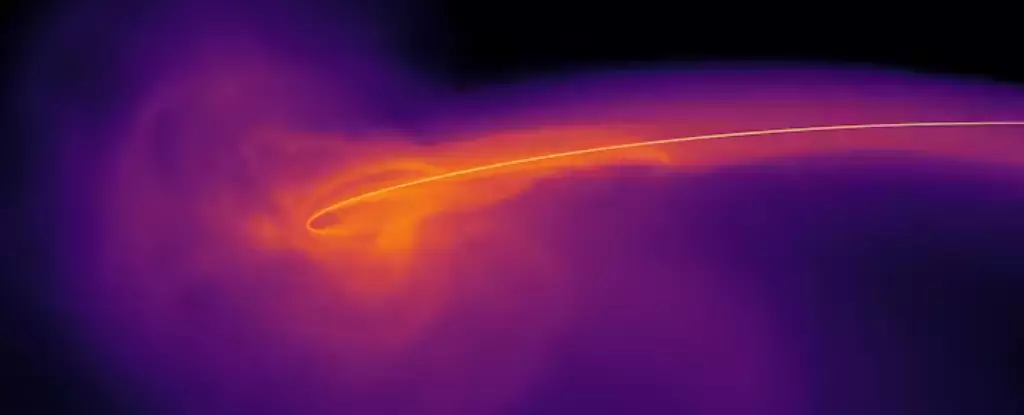The intriguing phenomenon of tidal disruption events in the centers of galaxies has puzzled astronomers for decades. Originally theorized by Jack G. Hills and Martin Rees in the 1970s and 80s, these events occur when a star is torn apart by a supermassive black hole, resulting in a spectacular display of fireworks known as a tidal disruption event. The debris from the star collides with itself to form an accretion disc, which is expected to radiate X-rays due to its intense heat. However, recent observations have revealed a discrepancy – most events glow at visible wavelengths rather than X-rays, with temperatures much lower than anticipated.
The temperature of the glowing debris around the black hole has been found to be a mere 10,000 degrees Celsius, unlike the millions of degrees expected from hot gas around a supermassive black hole. Additionally, the size of the glowing material has been inferred to be several times larger than our Solar System, expanding rapidly away from the black hole at a few percent of the speed of light. These unexpected findings have challenged previous theories and raised questions about the underlying mechanisms at play during tidal disruption events.
Simulation and Insights
Recent simulations conducted by a team of astronomers have shed light on the mysteries surrounding tidal disruption events. By employing a new simulation method developed by graduate David Liptai, the team was able to trace the entire process from the initial spaghettification of the star to the subsequent outflow of debris. The simulations revealed that only 1% of the shredded star’s material is actually consumed by the black hole, generating an extremely powerful and nearly spherical outflow of heat.
The simulations provided a new perspective on the smothering effect observed during tidal disruption events. Researchers had speculated that the black hole must be obstructed by material during the process, leading to the lack of X-ray emissions. The new findings confirm this hypothesis, demonstrating how the material that the black hole cannot swallow smothers the central engine and is eventually flung away. The solar-system-sized star expanding at high speeds observed in previous events can now be explained by the simulations.
Conclusion: Unraveling the “Black Hole Sun”
The simulations have unraveled the complexities of tidal disruption events and provided a plausible explanation for the observed phenomena. The enigmatic behavior of black holes during these events, resembling a messy eater consuming only a fraction of the available material, has been elucidated through detailed simulations. The concept of a “black hole sun” powered by the outflow of material from a disrupted star offers a fascinating glimpse into the extreme environments surrounding supermassive black holes. As astronomers continue to unravel the mysteries of the universe, tidal disruption events stand out as a captivating area of study that continues to challenge and inspire scientific curiosity.


Leave a Reply